Collecting blackberries and their relatives (Rubus spp.) for herbarium study is particularly challenging, and even experienced field-botanists may not appreciate everything that is involved. More than in other vascular plant groups, to make a good Rubus specimens, you need to understand a bit about the their life-cycle.
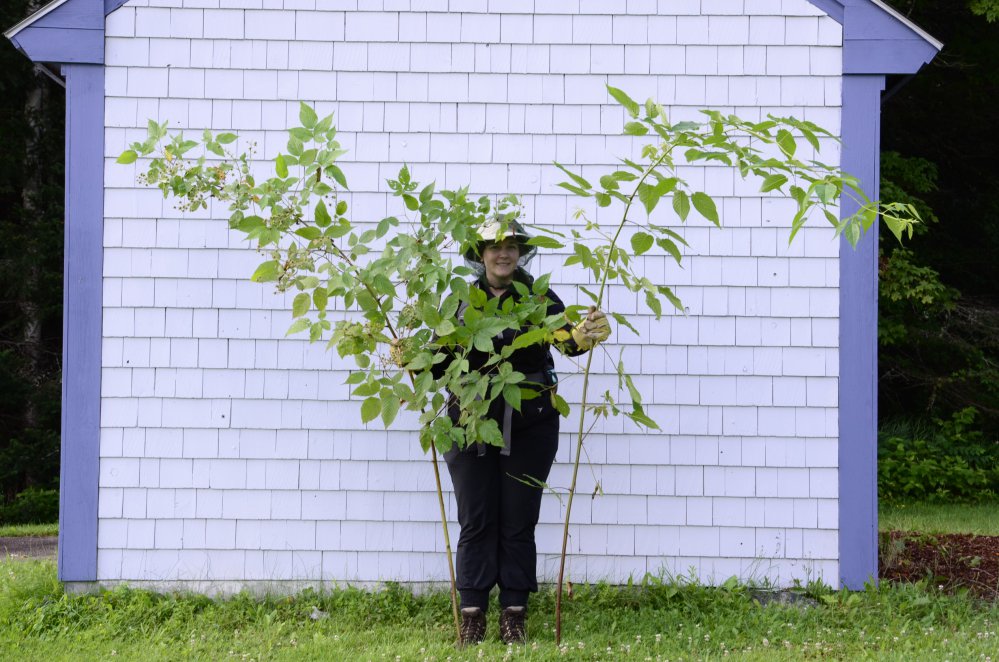
A single Rubus allegheniensis specimen, with the first-year primocane on the right, the second-year floricane on the left, and my expert Rubus presser Charlotte in the middle. Note that the primocane is unbranched, while the floricane has many flowering branches
Blackberries, and most other Rubus, are perennial shrubs. However, their stems, called canes, are biennial. In the first year of growth a cane remains in a vegetative state, and does not flower. Usually, it doesn’t even form any side branches. These canes are referred to as primocanes. At the end of the season, buds form in the leaf axils and at the shoot tip.
In the second year of growth, flowering shoots will emerge from these buds. At this stage, the cane is called a floricane. Growth stops after the fruits are formed; the floricane doesn’t produce any over-wintering buds.
A mature blackberry plant produces both primocanes and floricanes at the same time. The floricanes start earlier in the season, since they get a head-start building from last year’s primocanes. By the time the flowers appear in June or early July, the next batch of primocanes are only just beginning to emerge from the underground rhizome.
Unlike other angiosperms, blackberry flowers aren’t generally useful taxonomically1. The really interesting characters are the primocane leaves, the stem armature (prickles, bristles, hairs and glands) and the mature inflorescences of the floricane. This means the best time to collect specimens is later in the season, when the fruits are forming or ripe and the primocanes are well developed.
-
First, confirm that you are collecting both a floricane and a primocane, and they both come from the same rootstock. This is important, as we’ve seen a lot of mixed populations!
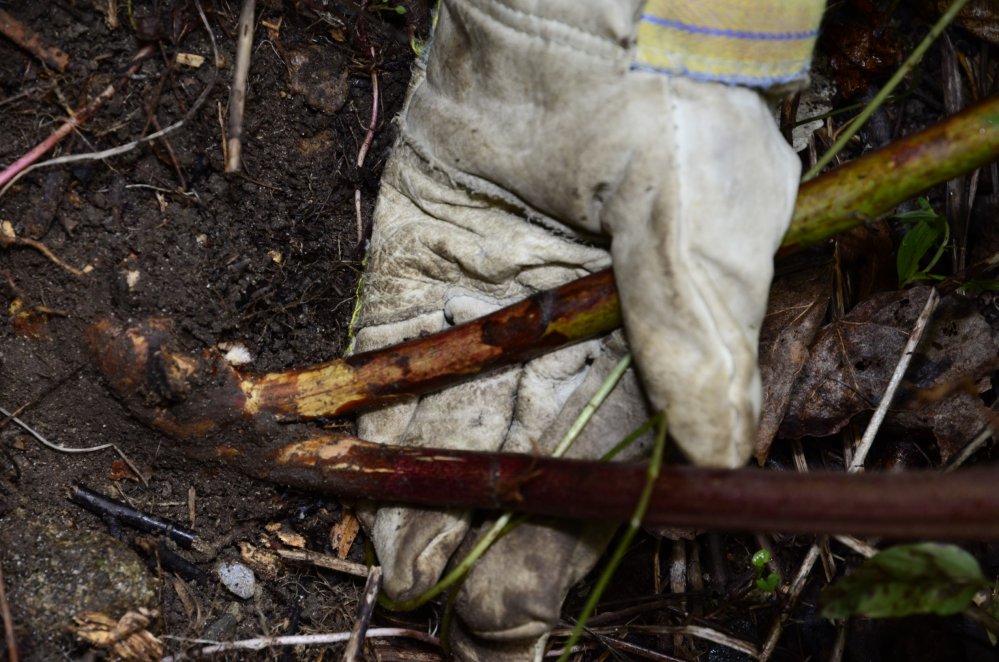
-
You make at least two separate sheets for each plant. For the first, select a representative section of the cane from the central part of the primocane, with a few well-formed mature leaves attached. The cane tips are easily damaged, and don’t generally press well. Similarly, the leaves at the base of the cane are often damaged or misshapen.
Pressing the leaves is tricky, particularly on prickly specimens. Keep in mind that on the mounted sheet you will want to see the intact outline of a complete leaf, as well as examples of the upper and lower surface of the leaves.
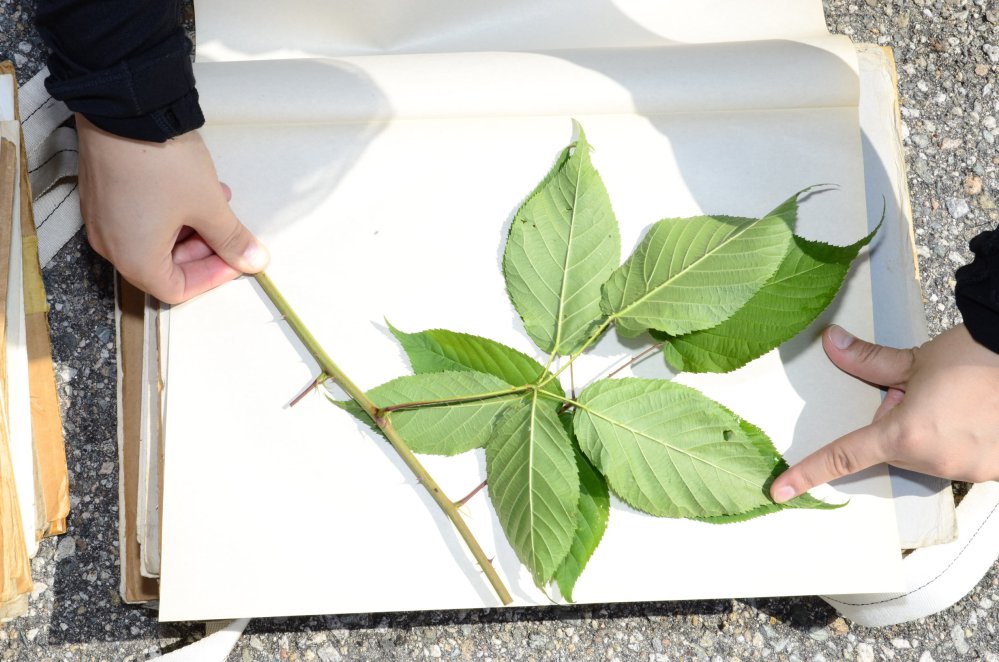
-
Make sure the specimen includes a nice segment of the most heavily-armed section of the stem. Sometimes the best leaves and the nastiest prickles are on different sections of the stem. If this is the case, include a section of the prickliest part of the stem, with the leaves removed, in your sample.
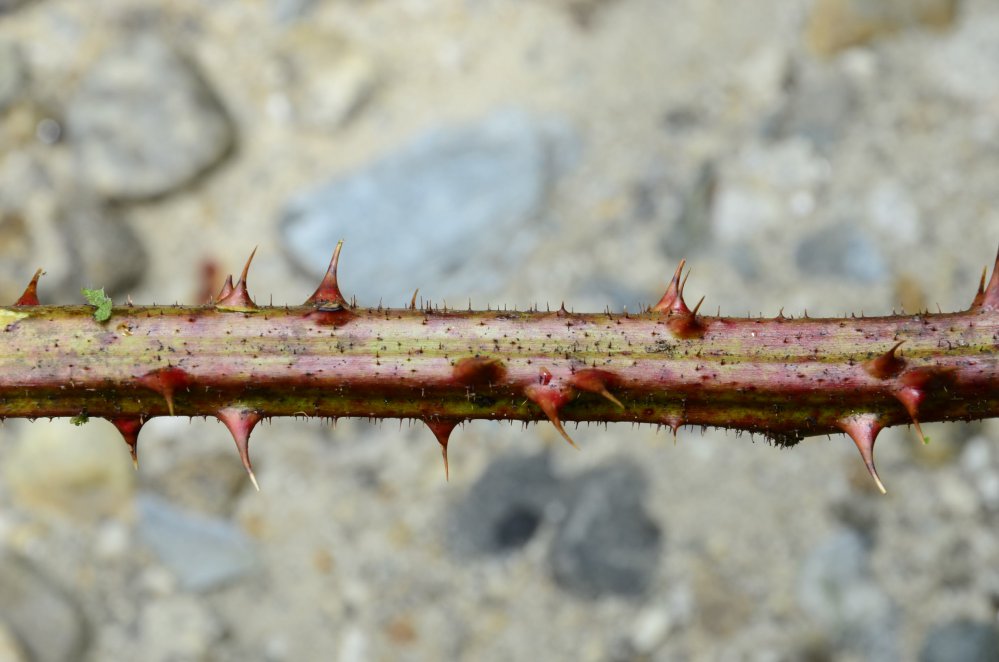
-
Use a second sheet, with a separate newsprint folder, for the floricane. Get a section of the stem with two or three well-formed inflorescence branches. Again, the little shoots at the very top or bottom of the cane are often misshapen, so use the center of the cane. As for the primocane, make sure you’ve got a section of the prickliest cane.
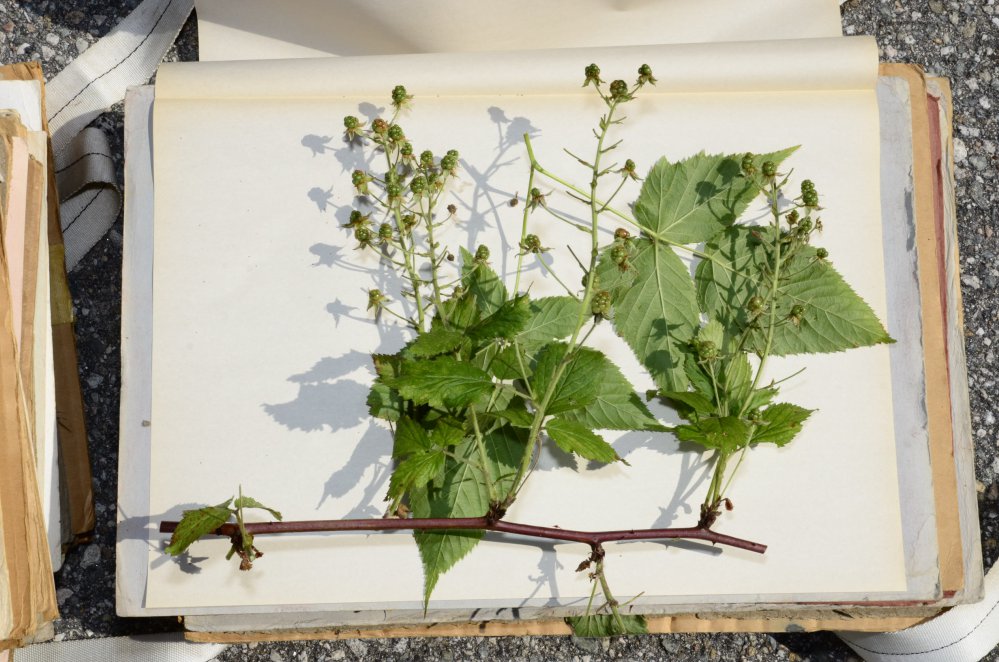
Floricane leaves are incredibly variable. If you can include a few well-formed leaves in the folder, great. They don’t get much attention taxonomically, though, due in large part to their inconstancy.
-
If you’re collecting tissue for DNA work, the freshly-formed leaves at the end of the primocane are the best source. I had some bad experiences as a grad student, and so I collect enough for at least four extractions, and four flow cytometry analyses. Typically 50-100 cm2. Double-bagged, with labels inside and out in case of catastrophe.

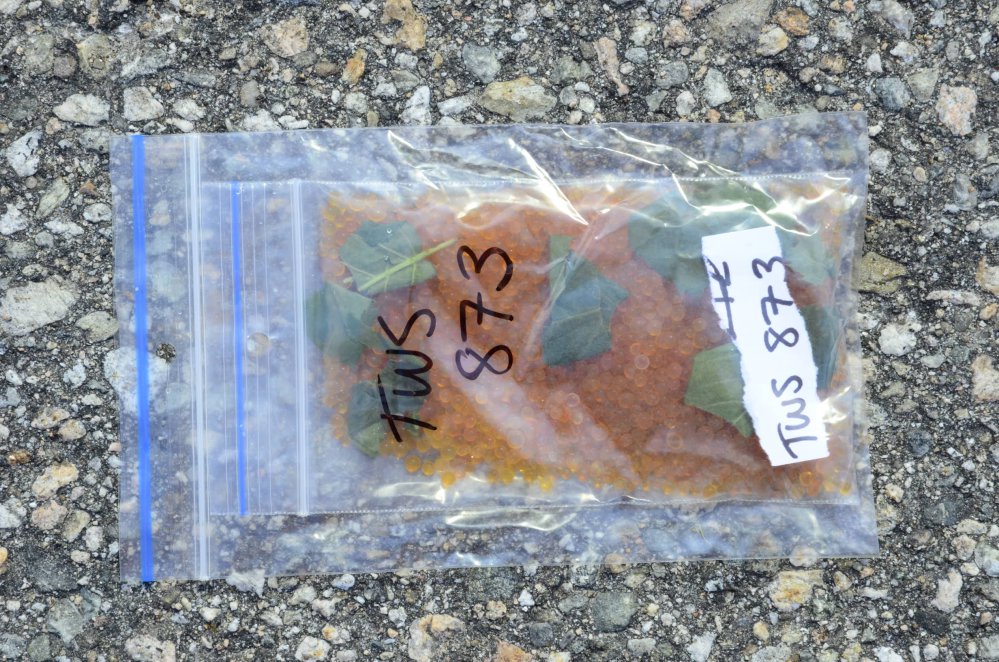
-
Finally, make sure you note the habit of the plant for the label. The major growth forms include:
- highbush blackberries, with upright, ascending, or somewhat arching stems that don’t reach the ground and don’t root at the tip
- doming forms, that start out upright, but arch and may or may not root at the tips, possibly trailing along the ground as well
- trailing forms, which may either grow prostrate on the ground, or trail and scramble over other low vegetation
Do your best to describe what you see. It can be challenging to determine if you’re looking at a trailing form, or a highbush form that is now growing on the ground after having been weighed down by snow or fallen branches. And some highbush species will look strange and stunted when growing in poor conditions.
The shape of the inflorescence should be visible on the sheet. The fruits, however, will either rot or dry down to a pile of seeds. So definitely include a note on their size (length and width). Also flavour, if you get some ripe ones. Better in your belly, with a good description on the label, than pressed into mash untasted!
Note that this protocol reflects the minimum necessary material for a useful herbarium collection. If you have time and space for more than two sheets, and you see interesting bits you’d like to include, you can always collect more. Some of our collections include five or six sheets for a single plant.
-
What I should say here is that flowers have not been found useful by previous taxonomic research on blackberries. Sadly, previous taxonomic research on blackberries is quite a mess, and I am prepared to accept that anything I think I know about this group is completely wrong. ↩︎